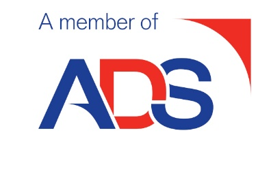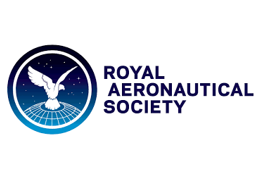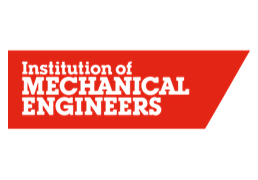Expert Witness Services
The case is a tricky one where the pilots are being blamed for destroying millions of pounds
of equipment. But after reviewing the case documents, a voice at the back of my mind is telling me
that the situation is a little more complicated than that.

The legal system is set up to apportion blame, but when technology is involved, the human operators can often be put in an invidious situation where "the
machine takes over" and they may find themselves being overwhelmed by events as they unfold in front of their eyes. Under these circumstances, humans can
behave in ways that are more primal than their training, years of experience, or even their ethical standards, might suggest. When this happens,
the physics of the situation is usually an important contributing factor that needs to be taken into account when properly presenting the facts of the case.
There are some obvious warning signs that a more nuanced view of events might be more appropriate than blaming matters directly on the human operator.
Some questions that you might ask :
There are some obvious warning signs that a more nuanced view of events might be more appropriate than blaming matters directly on the human operator.
Some questions that you might ask :
- Did events unfold so quickly that the humans that were involved would not have had time to think through the consequences of their actions?
In which case the physics of the situation probably played a far greater role in the incident than the pilot's inputs.
- Were the circumstances of the accident outside the usual operating experiences of the pilot? Aircraft are often designed with a tightly-defined
envelope within which their behaviour is benign - outside this envelope a range of complex aerodynamic effects can take over and make the aircraft
behave counter-intuitively - or even render it uncontrollable in extreme cases.
- Was the pilot subject to a high workload? Some aircraft have slow but pathological dynamics that require the pilot to pay constant attention
to the controls. If the pilot is distracted, for whatever reason, then these aircraft can quickly and unexpectedly get out of hand.
- Was the aircraft brand new? In which case there may have been undetected manufacturing flaws in the specific vehicle involved. Or was the aircraft
type relatively new? In which case there may be as-yet undiscovered flaws in the design that contributed to events.
- Had the aircraft recently undergone maintenance or repair? Was there a history of repeated faults with the aircraft? In many cases this is a
sign that a systemic issue might lie at the heart of the problem.
- Does the accident report seem to be making sweeping generalisations, rely on an extended chain of causal factors, or
refer to strange and obscure mechanisms to explain certain events? Bear in mind that the accident investigator is relying on their own
interpretation of often very limited evidence, and what appears as an authoritative statement may often just be their "best guess".
- Is the first-hand witness testimony contradictory? It is often the case that humans rationalise what they have seen or heard, especially
if they are not experts, and the nuggets of truth may need to be unpicked from the matrix in which they are embedded.
- Are the individuals that have already commented on the incident as expert as they appear to be on paper? Unfortunately it is often the case that
pilots and operators have limited exposure to the detailed aerodynamics that is needed to make full sense of some aviation-related incidents,
and instead rely on pilot-school rationalisations and pseudo-science to explain events.
It is an interesting exercise to try to generalise our experiences as expert witness, especially given the breadth of issues that have needed to be addressed in the types of court case in which we have been involved.
In short, the most productive use of time has often been simply to undertake a detailed re-examination of the available evidence to find points that the initial investigation had glossed over, mis-interpreted, or dismissed as marginally-relevant. In several cases, the initial investigation had missed the importance of one or more key aerodynamic effects in influencing the behaviour of the vehicle, or had underestimated the subtlety of the aerodynamics when attributing the cause of the incident to a particular physical effect. Hence the written record of events had ended up being consistent with most but not all of the facts at hand. These issues with the record as it stood would never have been easy for a generalist to identify - indeed, spotting them required the services of someone with a breadth of exposure to aeronautics and specialist knowledge in the field of aerodynamics. With our years of experience in modelling the characteristics of aeroplanes and helicopters and understanding the fundamentals of their behaviour, we were the appropriate people to call upon.
Obviously, simply casting doubt on the established record is only part of an effective courtroom strategy - instead, we were able to back up our assertions with rigorous, solid, quantitative analysis - based on our understanding of the underlying physics - to provide a narrative that was consistent with all the facts that were available at the time. In all instances, the power of such analysis over speculation and conjecture was unimpeachable, and enabled the lawyers to have significantly more confidence in their case than their opposition on the other side of the courtroom.
At Sophrodyne we understand very well the needs of the lawyer and pride ourselves in being responsive to his/her need to present his/her arguments in as clear, convincing and succinct a manner as possible. Our educational background has made us skilled at report-writing, and we have a reputation for logical and clear exposition and the ability to distil the physical arguments so that they can be understood in a courtroom setting. We have the skills and experience to guide you through to a sensible legal strategy, and we have coached lawyers and barristers in the technical background to their case so that they can be confident, flexible and persuasive in the courtroom.
We can do a quick "sanity check" to make sure the evidence stacks up or to find any "holes" worthy of further investigation. Often a simple scaling analysis is all that is required to distinguish possibility from impossibility, and we have the domain expertise to recognise the salient physical factors at play. Occasionally a more sophisticated analysis is justified, and, if appropriate, we have the accurate aerodynamic models to support a more extensive analysis. We know how to use these tools effectively to expose the relevant underlying physical mechanisms - based on the range of known contributing factors or the likely scenarios that led to the incident - that might have played a role in the specific events that took place on the day. Most importantly, we have the credentials in terms of expertise and experience to back up our conclusions and to give them the gravity that they deserve as evidence in court.
We would be happy to talk further about specific cases or to provide references on request.
© Sophrodyne Ltd 2015 - 2025





